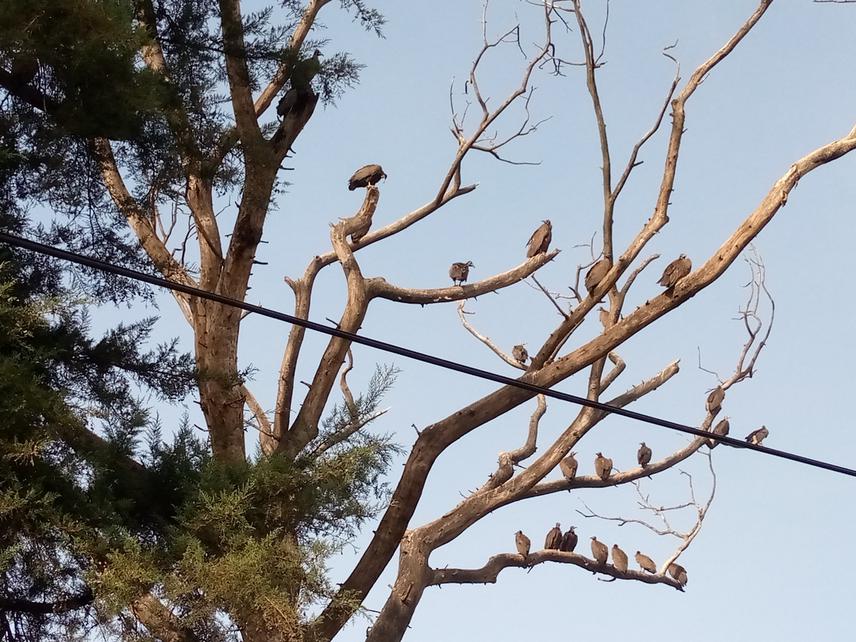Million Abushi Tiko
The highly endangered hooded vulture (HV) (Necrosyrtes monachus) population is rapidly declining in Africa (Buechley et al., 2019). In three generations, the population has decreased by 83% (Ogada et al., 2016). Poison baits are the most frequently cited cause of population reduction in East Africa (Mundy, 2020). Accidental poisoning (from poisoned feral dogs (Abeba, 2013)) and habitat damage caused by the rapid construction of poorly designed electricity infrastructure (collision) (Munday, 2020; Aferwork and Teklemariam, 2021) are causing serious harm or death to the HV in the region, including Ethiopia.

Hooded vulture individuals roosting nearby Jimma University’s Referral Hospital dumpsite. © Million Abushi
As a result, despite the fact that Ethiopia is a naturally diversified and understudied country (Buechley et al., 2019), the country's natural resources are under severe stress (Buechley et al., 2021). The hooded vulture is one of seven vulture species under severe threat (Botha et al., 2017; Buechley et al., 2021), with limited scientific data on population size, distribution and movement patterns, and breeding locations. The hooded vulture Research and Conservation Priority Index (RCPI) value (0.75 out of 1) (Buechley et al, 2019/2021) demands basic current information for hooded vulture conservation for optimal priority areas conservation of the species.
Therefore, with a focus on producing baseline data to support vulture species priority area conservation in Southwest Ethiopia (Jimma, Bonga, and Agaro towns; areas expected to be the species' most significant stronghold), this study will be conducted to record ecological and anthropogenic factors determining the status and distribution of hooded vulture. The following are the study's particular objectives:
- To estimate the size of the hooded vulture population in the study area
- To map the distribution and show movement patterns of hooded vultures in the study area.
- To locate a breeding colony of hooded vultures in the study area.
- To raise general public knowledge about the importance of hooded vulture conservation in the study area.
Header: Hooded vulture on the top of building near Health Science student cafeteria’s dumpsite at Jimma University. © Million Abushi.